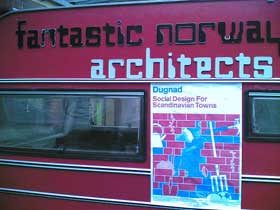Art and Activism: Check it Out

For all those who are in
However, I did want to point out one of the particularly cool pieces. Kate Rich has struck on a really interesting idea:
Feral Trade is developing protocols for trading goods over social networks... The passage of goods can open up wormholes between diverse social setting, routes along which other information, techniques or individuals can potentially travel... Feral Trade makes a direct intervention into the business of grocery running, using the surplus freight capacity of commuter, vacation, migration, cultural and other social movements for the underground distribution of goods.
Using social networks to challenge corporate distribution models is an interesting idea. I am curious how this might look on a local level. For example, could it be possible that when people take local vacations to the country they would bring back a car full of locally grown produce and using their social network to distribute the food.






